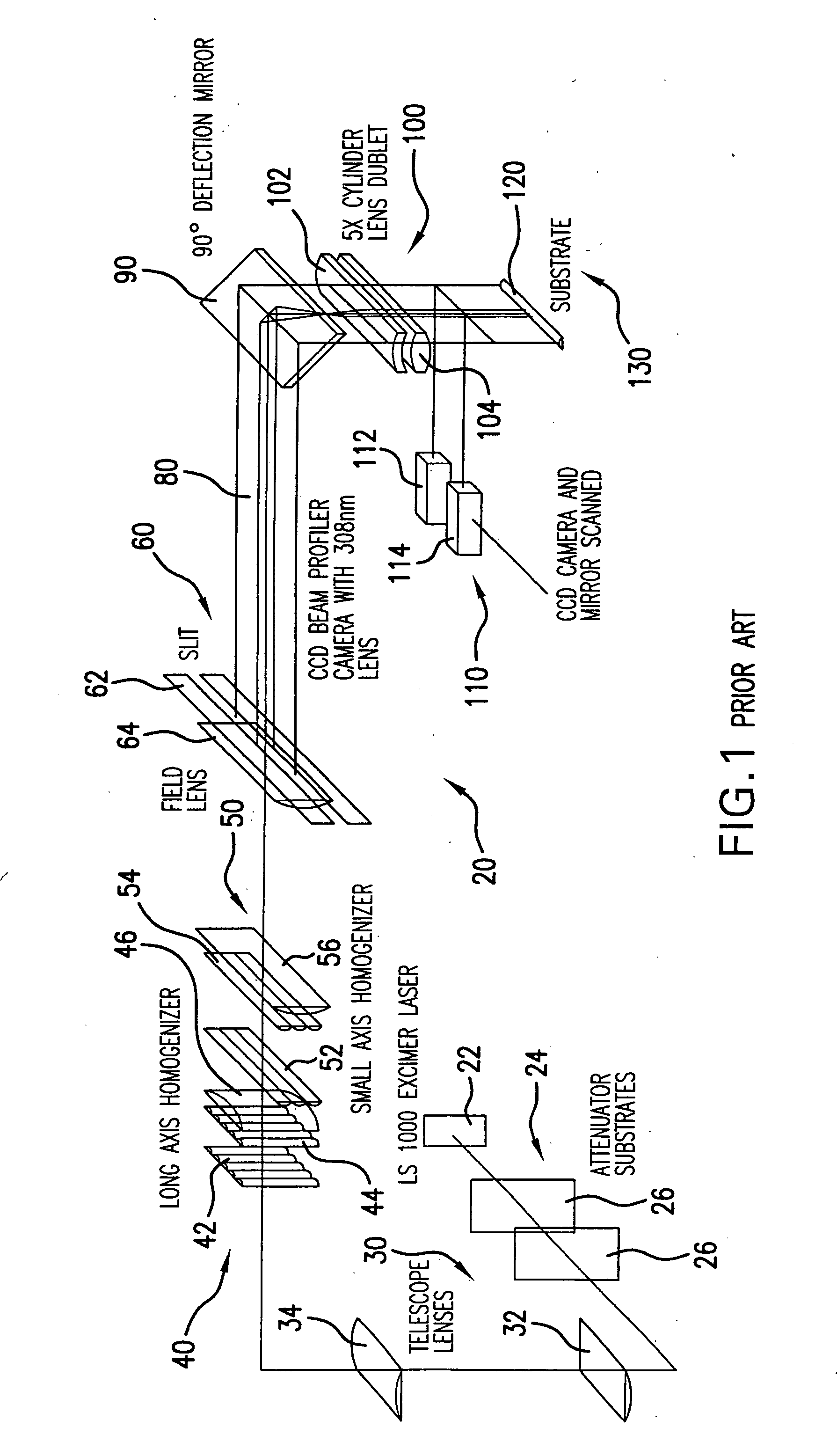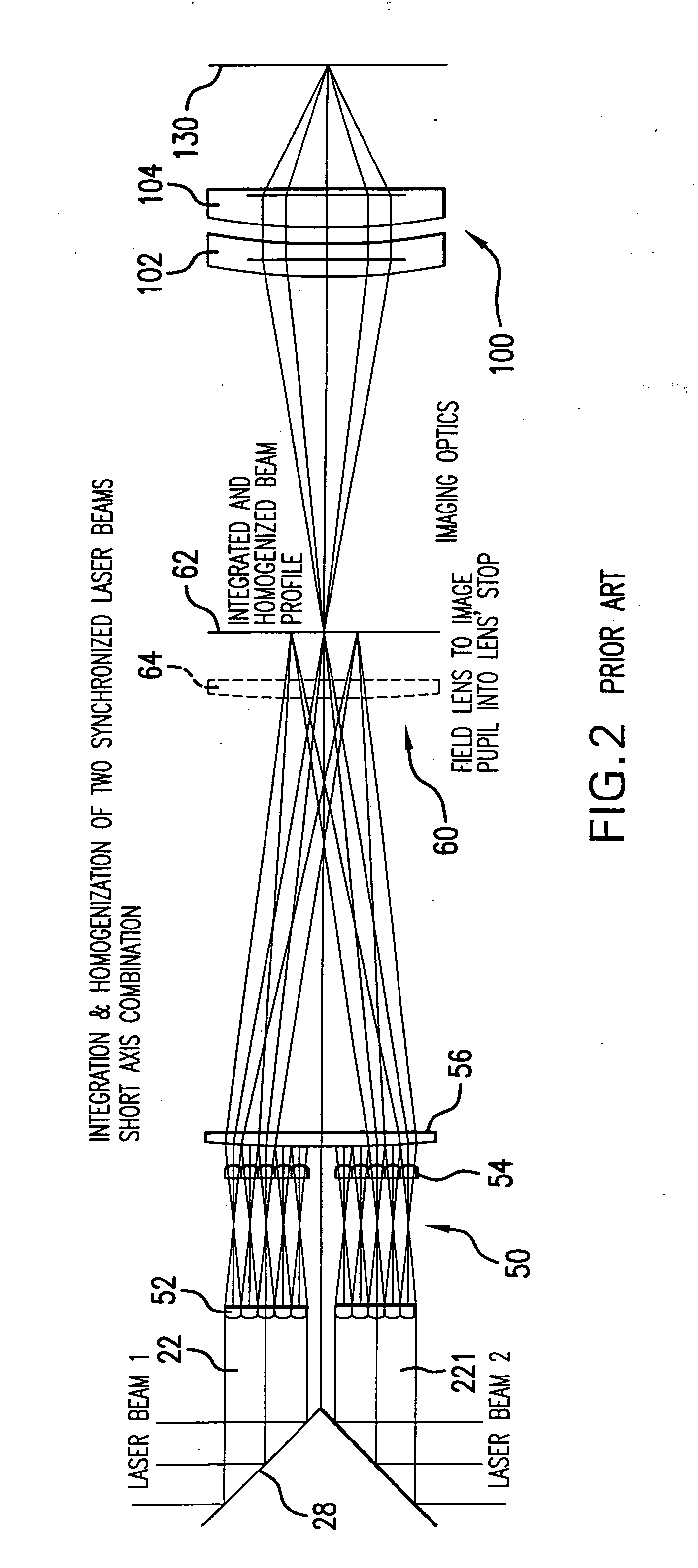Laser thin film poly-silicon annealing optical system
a thin film polysilicon and optical system technology, applied in the direction of active medium materials, manufacturing tools, crystal growth processes, etc., can solve the problems of imaged beam profile distortion, imaged beam cannot be fully resolved, beam-profile distortion, etc., to achieve high average power, high repetition rate, and high energy
- Summary
- Abstract
- Description
- Claims
- Application Information
AI Technical Summary
Benefits of technology
Problems solved by technology
Method used
Image
Examples
Embodiment Construction
[0038] Applicants propose a directional SLS system that has simple optics for crystallization and activation, produces or can produce essentially grains that extend the length of the workpiece, yielding a mobility of 200-400 and a throughput of 35 sheets per hour. The maintenance per sheet form applicants' proposed system is about 37 percent cheaper than the JWS ELA system and has process margins that are insensitive to energy or focus in comparison to the JWS systems.
[0039] Applicants propose for a sheet size of 370×470 the capability of utilizing part of a beam that will cover the sheet comprising the substrate in one scan with a 365×0.02 mm or smaller elongated thin beam and will cover a 730×920 sheet with a single scan of an elongated thin beam of 730×0.02 mm with a laser repetition rate or at least 4000 Hz, overlap of, e.g., 90%, scan pitch of, e.g., 0.002 mm, scan length of 470 mm, enabling in the former case 235,000 crystallization shots per sheet, a 59 second crystallizatio...
PUM
| Property | Measurement | Unit |
|---|---|---|
| length | aaaaa | aaaaa |
| length | aaaaa | aaaaa |
| width | aaaaa | aaaaa |
Abstract
Description
Claims
Application Information
 Login to View More
Login to View More - R&D
- Intellectual Property
- Life Sciences
- Materials
- Tech Scout
- Unparalleled Data Quality
- Higher Quality Content
- 60% Fewer Hallucinations
Browse by: Latest US Patents, China's latest patents, Technical Efficacy Thesaurus, Application Domain, Technology Topic, Popular Technical Reports.
© 2025 PatSnap. All rights reserved.Legal|Privacy policy|Modern Slavery Act Transparency Statement|Sitemap|About US| Contact US: help@patsnap.com



